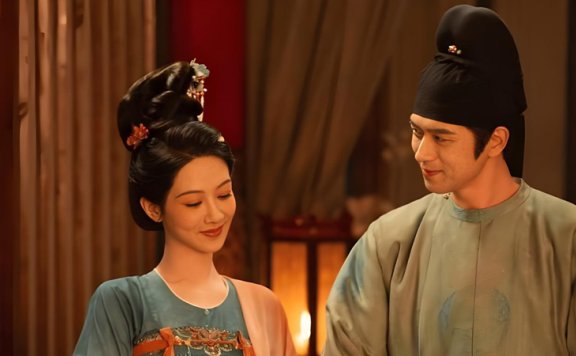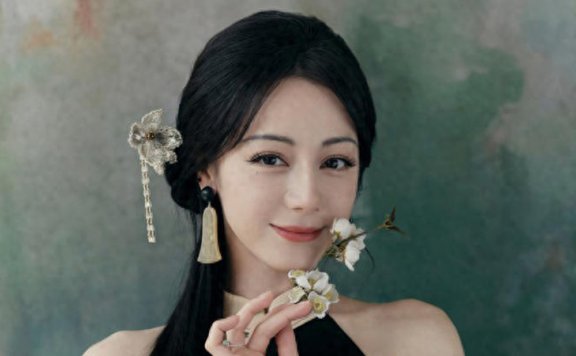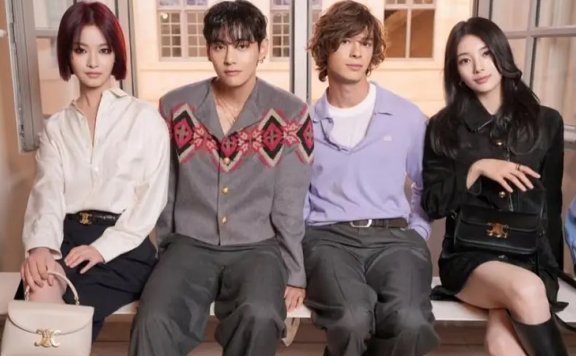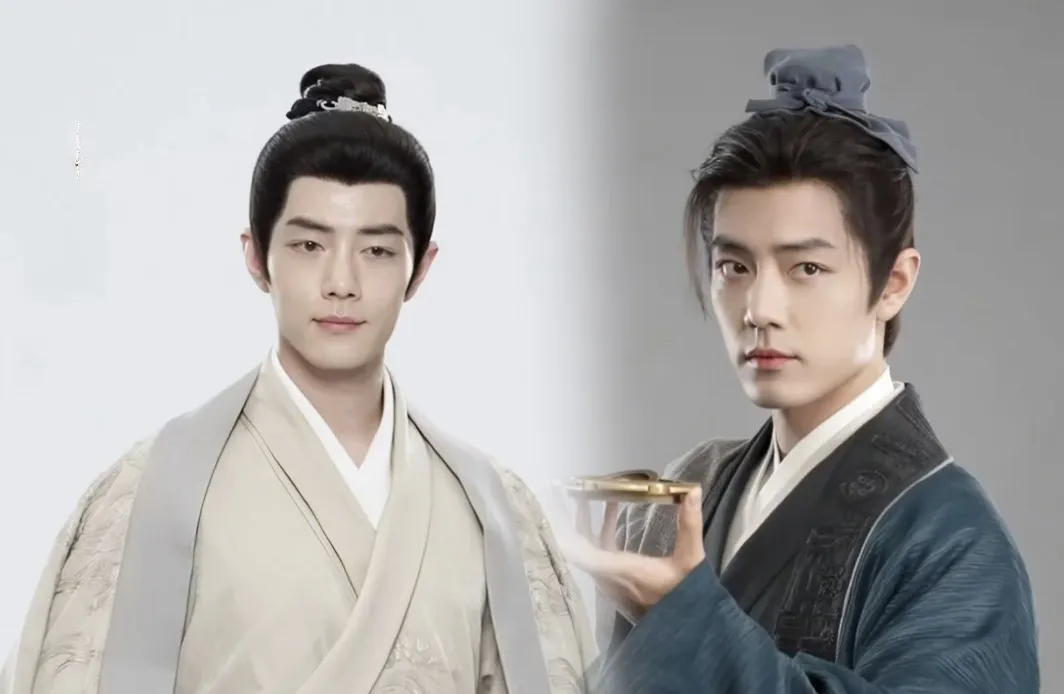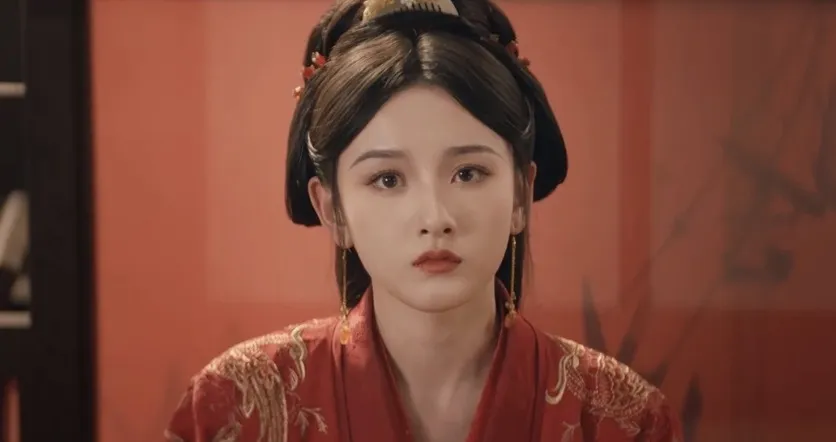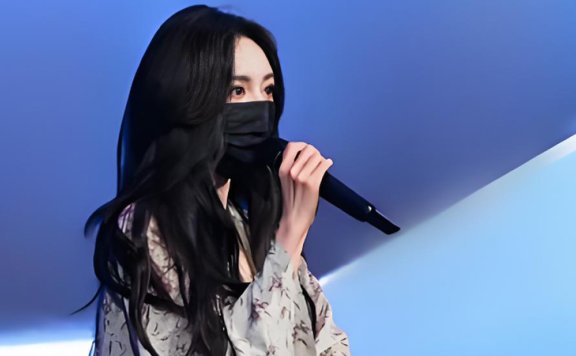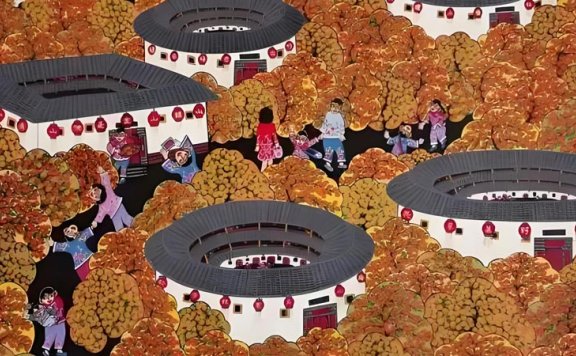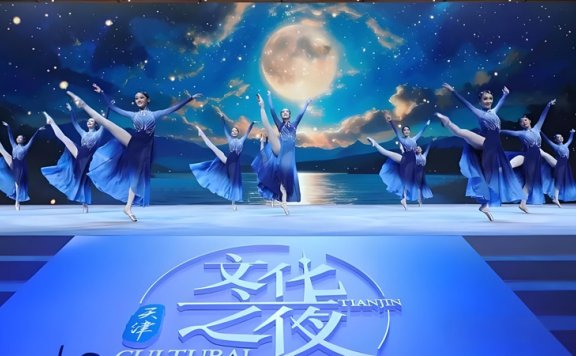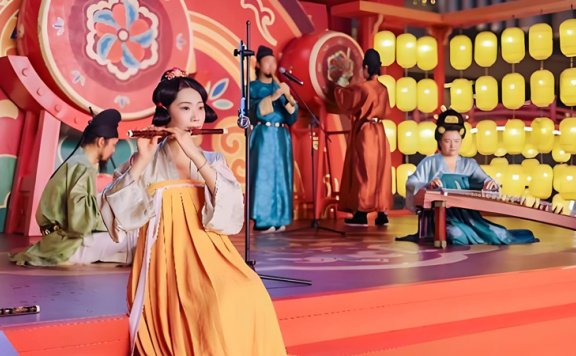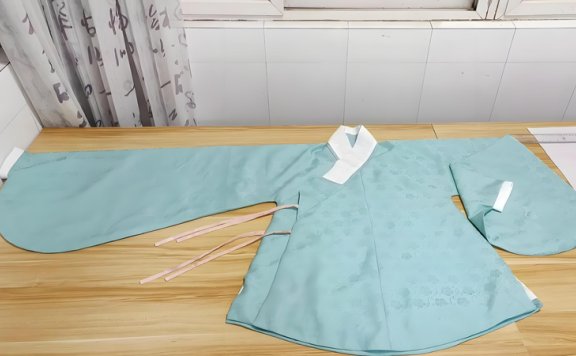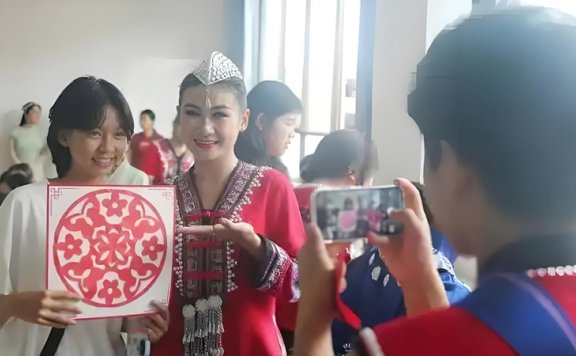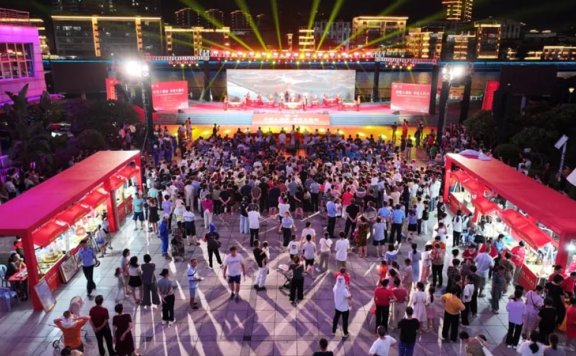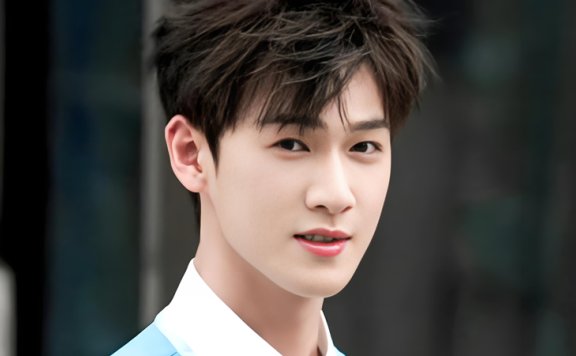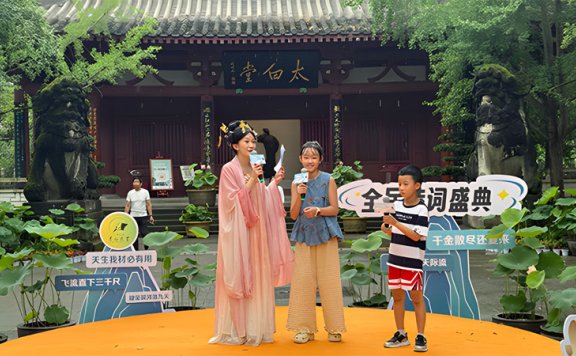Article
搜索结果:
-
Lead Cast Struggles Dim Flourished Peony’s Shine
Flourished Peony—debuted this summer, aiming to dominate the seasonal drama race. Yet, despite star power and grand expectations, the show battles sluggish pacing, formulaic storytelling, and uneven performances that leave audiences questioning its potential. Narrative Stagnation Flourished Peony opens with a baffling choice: nearly 15 minutes of recap in its first three episodes. This heavy reliance on nostalgia feels less like a thoughtful callback and more like narrative filler, disrupting momentum before the story gains traction. Audiences quickly encounter familiar tropes—rivals Jiang Changyang (蒋长扬) and Qin Liulang (秦六郎) vying for heroine He Weifang’s (何惟芳) affection. These contrived rivalries dilute the promised "strong female lead" arc, reducing Weifang to a trophy in a tiresome love triangle. One viewer aptly quipped, “Qin Liulang’s role seems purely decorative.” Further draining momentum are recycled conflicts. Villainous concubine Lianzhou frames Weifang’s ally Zhu Fu with clumsy schemes, while jealous noblewoman Li Youzhen sabotages Weifang’s business. Each confrontation feels predictable, lacking the sharp wit or cathartic payoffs of competitors like The Double (墨雨云间). The plot’s fixation on jealousy, false accusations, and imprisonment grows monotonous. By Episode 5, Weifang faces torture while her friend Xiao Chun shares her cell—a repetitive cycle of suffering that offers little novelty… -
Honkai: Star Rail's 3.4 Update Captivates the Globe
The launch of Honkai: Star Rail's (崩坏:星穹铁道) Version 3.4 coincided with a remarkable celestial event over Shanghai: a stunning solar halo. As players worldwide eagerly pulled for the new playable character, Boothill, whose persona is intrinsically linked to the sun within the game's narrative, the timing felt uncanny. Social media erupted globally. International players joined Chinese fans in marveling at the synchronicity, half-jokingly questioning if developer miHoYo had somehow orchestrated the weather or if Boothill's legendary wrath had truly shattered the barrier between fiction and reality. This serendipitous alignment wasn't just a viral moment; it became an organic, powerful validation of Boothill's meticulously crafted character arc, amplifying the update's impact far beyond the game's servers. Version 3.4 didn't just introduce a character; it delivered a narrative earthquake, redefining player perception and dominating revenue charts across multiple regions for days. Solar Halo Sparks Global Frenzy The appearance of the solar halo over Shanghai became an instant phenomenon within the Honkai: Star Rail community. Players drew an immediate, visceral connection between the real-world spectacle and Boothill's defining line from the Penacony storyline: "I am the rising sun!" Images and videos flooded platforms like Twitter, Reddit, and Chinese social media. International players expressed… -
Global Youth Redefine Rural China Through Shanghai's Countryside
A unique symphony of cultures unfolded recently in the lush landscapes of Shanghai's Jinshan district, as students from Egypt, Morocco, Vietnam, Russia, South Korea, Mongolia, Nigeria, and China embarked on a journey challenging conventional perceptions of rural life. Organized by the Communist Youth League of Jinshan District and Shanghai International Studies University (SISU), this immersive experience revealed a dynamic China where ancient traditions harmonize with cutting-edge innovation and global community thrives. Beyond the picturesque lotus ponds and waterways, these young explorers discovered a countryside pulsating with unexpected energy and opportunity, forging connections that transcended national borders through shared wonder and participation. Digital Nomads, Rural Roots Stepping into the Caojing Digital Nomad International Village, the international visitors encountered a startling fusion of pastoral beauty and modern work culture. They navigated serene paths along the shimmering Reservoir Central River, wandered through the lotus-filled Ouyu Park, and discovered professionals from across the globe working in a library ingeniously repurposed from abandoned buildings. "Here, the charm of the Jiangnan watertown coexists with pioneering lifestyles and community structures. Advanced infrastructure blends seamlessly with idyllic rural scenery, completely overturning my previous image of the Chinese countryside," remarked Bian Zhiyuan, a student from South Korea . This… -
Dilraba: Redefining Modern Chinese Qipao on Global Stage
As Chinese cultural aesthetics gain global traction, actress Dilraba (迪丽热巴) emerges as its most captivating ambassador. Her recent fusion ensembles—a deconstructed qipao and an ink-wash gown—transcend mere fashion statements, weaving historical reverence with contemporary audacity. This exploration delves into how her sartorial choices ignite cultural pride, challenge design boundaries, and crystallize a new era of "Eastern Glamour." The Revolutionary Qipao Rebirth Dilraba’s black-and-gold qipao shattered conventions at a recent gala. Its asymmetric silhouette—featuring a single sculpted sleeve and strategic cutouts—balanced tradition with rebellion. Gold embroidery snaked across midnight silk, evoking dynastic opulence while the exposed shoulder whispered modernity. This architectural masterpiece proved heritage wear needn’t be archival. The ensemble’s genius lay in its disciplined restraint. Unlike ornate historical qipaos, Dilraba’s version used negative space as artistry. A solitary golden phoenix clasp anchored the neckline, while the split skirt revealed flashes of leg sans vulgarity. Every element served the garment’s narrative: China’s past reimagined for fearless futurists. Her styling amplified the revolution. Matte crimson lips contrasted with ink-black hair swept into a low chignon. No jade bangles or dangling earrings distracted; instead, a single gold ring echoed the gown’s metallic threads. Minimalism magnified the garment’s structural audacity. Social media erupted. Weibo… -
Cultural Gifts: Ideas for Global Friends
Building genuine connections across cultures enriches our lives. When birthdays or holidays arrive, choosing the right gift for foreign friends becomes more than a gesture—it’s an opportunity to share your heritage while honoring theirs. Thoughtful presents spark joy, foster mutual understanding, and create lasting memories. This guide explores unique, culturally resonant gifts that transcend borders. Handcrafted Cultural Treasures Traditional crafts tell stories of heritage and artistry. Chinese embroidery, like Suzhou or Sichuan styles, showcases intricate techniques passed down for generations. Pieces featuring nature themes—birds, flowers, or pandas—capture attention with vivid detail. These works transform into elegant wall hangings or table displays, offering daily inspiration. One diplomat displayed Suzhou embroidery in her office, prompting colleagues to ask about its symbolism, turning the gift into a conversation starter. Yixing clay teapots represent another timeless choice. Crafted from porous purple clay, these teapots enhance tea flavors over time. Classic designs like the "Shi Piao" (stone dipper) balance form and function. For tea enthusiasts, gifting a small Yixing pot with premium oolong creates an interactive experience. A London-based chef uses his daily, noting how the ritual centers him—proof that utility and tradition coexist beautifully. Culinary Delights from the Region Regional flavors offer edible adventures.… -
Asian Stars Steal Spotlight at Paris Fashion Week
The ongoing Paris Fashion Week has transformed into a global stage where cultural boundaries blur and style narratives intertwine. Beyond the haute couture runways, the attendance of Asian celebrities has sparked conversations about evolving aesthetics and cross-cultural influences. Chinese actress Liu Shishi (刘诗诗), Korean icons Bae Suzy and Park Bo-gum, alongside rising talents like Li Gengxi (李庚希) and Kim Tae-hyung, each brought distinct interpretations of contemporary fashion to the City of Lights. Quiet Power in Minimalism Liu Shishi’s presence for CELINE epitomized understated sophistication. Her khaki maxi skirt paired with a crisp white turtleneck embodied "quiet luxury," a trend championing refined simplicity over ostentation. The deliberate choice of a silk scarf as a hair accessory became her signature touch—elevating the ensemble with intellectual grace. Her poised demeanor, captured mid-stride under an umbrella, revealed a mastery of atmospheric storytelling through posture alone. The actress’s second look—a black button-down dress layered over tailored trousers—hinted at enigmatic allure. Unlike overtly theatrical designs, her outfits relied on precision tailoring and monochromatic harmony, proving that subtlety commands attention. This philosophy mirrors a shift toward intentionality in fashion, where wear ability merges with artistic vision. Korean Charm Reimagined Bae Suzy’s arrival showcased why she remains Korea’s… -
Why Does Bai Bing's Corset Have a Row of Buttons?
In the cdrama The Legend of Zanghai, Bai Bing plays Master Liuchu, and her corset clothing image is very impressive. Netizens are asking: Why does her corset have a row of buttons in the front? Let me give the conclusion first. In fact, there were corsets with front - opening buttons in the Ming Dynasty, called 'Zhuyao' (主腰). They were quite popular during the Yuan and Ming Dynasties and were also known as 'Hehuanjin' at times. Its biggest feature is the front - opening placket, which could be fastened with ties or buttons. Some people also refer to all the underwear styles of the Ming Dynasty as 'Zhuyao' instead of 'corset', which is just a different way of saying it. From cultural relics, it's obvious that this style could have shoulder straps, or not. The shoulder straps could be worn straight or crossed (see the two pictures on the bottom right), showing its flexibility in binding and fashion sense. Those without shoulder straps can also be classified as corsets. However, the common corsets in the Song and Ming Dynasties were mostly one - piece wraparound types with ties, while the 'Zhuyao' was a front - opening style. This one -… -
Is There a Story Behind Xiao Zhan's Scarf Headgear?
In the ancient - costumed TV drama The Legend of Zanghai, is there a story behind Xiao Zhan's scarf headgear? Does it seem to represent the typical outfit of a poor scholar in old - fashioned TV dramas? Comparing the picture on the left where he isn't wearing the scarf, he does seem more innocent. First, let me conclude. This is an ancient handkerchief, a square piece of cloth. You wrap it around your head with two corners on the outside to secure it. Both men and women often used it to cover their heads. The purpose is the same as using a hairband to hold back loose hair today, just to keep the hair in place and make the appearance neater. This way of wrapping the head with a scarf has appeared throughout the dynasties and was mostly used by the common people. It could be made from scraps of clothing. However, don't look down on the scarf headgear. It's a 'veteran' among head - scarf accessories. Before the Wei and Jin Dynasties, both men and women could wrap their heads with scarves, with men using it more often. One type is called 'Zi Cuo' (缁撮), which is the… -
Song Zuer's Iconic Curved Eyebrows
Song Zuer's eyebrows are truly iconic! In ancient - costume TV dramas, her Han - style makeup and styling as Xiao Qiao have once again won praise from netizens. Chinese classical eyebrow shapes are incredibly appealing! Let me first state that this kind of eyebrow shape is called a "curved eyebrow" in ancient times. It's one of the traditional eyebrow shapes that enjoyed the longest popularity in ancient China. The main features of the curved eyebrow are thick at the brow head and thin at the brow tail. The brow head gently rises to the brow peak and then smoothly falls. The boundary of the eyebrow shape is indistinct, and the color is like a stroke of ink, lighter at the brow head and darker at the brow tail, exuding a sense of fragility. Some netizens dug out Song Zuer's childhood look as Nezha, which also had thick curved eyebrows. They joked that even her eyebrows have grown proportionally! Now, about curved eyebrows, it's a general term. Any eyebrows with a curve can be called "curved eyebrows". Logically, the classic willow eyebrows in history are also a type of curved eyebrows. The willow eyebrows are thinner and longer than the… -
Yang Mi Sparks Hanfu Renaissance: Chinese-Style Fashion's New Trend
A single red carpet moment at the Shanghai Cooperation Organization Film Festival ignited an unprecedented cultural phenomenon. Chinese actress Yang Mi’s choice to wear a Jin Dynasty "Zhu Jie Yi" (Bamboo-Pleat Garment) didn’t just captivate fashion critics; it triggered a seismic shift in consumer behavior and revitalized a niche traditional craft. Within 48 hours, sales for the previously obscure Hanfu brand Ting Lan Song exploded from 50 monthly orders to over 35,000, forcing the small workshop to implement a 45-day pre-order system. This event transcends celebrity endorsement—it represents a pivotal case study in how cultural heritage can explosively intersect with modern influence, democratizing ancient aesthetics for contemporary life. Red Carpet Revolution Yang Mi’s ensemble fused meticulous historical accuracy with effortless modernity. Based on artifacts from the China National Silk Museum, the garment featured signature bamboo-stripe patterns and expansive sleeves characteristic of Wei-Jin aesthetics. Yet her styling—pairing it with a plain white tee, black trousers, and minimalist sneakers—transformed academic reconstruction into street-ready elegance. This deliberate fusion shattered perceptions of Hanfu as impractical costume, proving its adaptability for everyday wear. The visual impact resonated instantly. Paparazzi shots of Yang Mi during festival rehearsals, her hair loosely styled and face partially masked, radiated… -
Vibrant Strokes: The Rebirth of Zhangping Folk Art
When the monumental folk painting Fujian’s Jubilant Song (3.23m × 2.51m) debuted at China’s inaugural Rural Art Exhibition, its crimson hues and dynamic scenes—from ancient Tulou buildings to lion dances—captured the essence of Fujian’s spirit. Created by seven artists from Zhangping, this work symbolizes the revival of a 400-year-old tradition nearly lost to urbanization. Wu Yuhuan (吴玉环), a master painter, describes the style: "Bold colors, whimsical figures, and auspicious themes that radiate sincerity." Once fading, Zhangping’s folk art now thrives through innovation and community effort. Roots in Resilience Zhangping’s painting legacy began in Xin’qiao Township during the Ming-Qing transition. Local artisans blended folk customs with daily life observations, developing a distinct aesthetic recognized as Fujian’s intangible cultural heritage. By the 1980s, "The Zhangping Phenomenon" emerged—a golden era where artists won national awards for works bursting with rural vitality. Yet by the 2000s, economic pressures drove painters toward commercial replica art. Chen Yongfeng (陈永凤), director of Zhangping Art Museum, recalls, "The exodus left villages silent. We feared the tradition would vanish." The 2010 founding of Zhangping Folk Painting Academy reversed this decline. Veteran artists like Wu Yuhuan and Liu Wenying (刘文英) led free workshops, attracting teachers, farmers, and artisans. Lan Yanping,… -
Top Variety Shows of 2025: Who Can Save 'Singer'
The stage lights blaze, but the applause feels hollow. As Singer 2025 enters its climactic rounds, audiences confront an uncomfortable truth: fame has eclipsed artistry. This season’s controversies—questionable eliminations, auto-tune suspicions, and viral but vocally weak contestants—threaten the show’s legacy. Yet amid the noise, three voices emerge as beacons of hope. Their clash could redefine what "music competition" truly means. Vocal Powerhouses vs. Viral Hype The show’s credibility teeters on shaky foundations. Viewers decry rules favoring popularity over skill, like Ma Jiaqi’s controversial advance despite uneven live performances. Fan-voting mechanisms, once celebrated for democratizing music, now face accusations of manipulation. When Fan Weiqi’s pitch wavered catastrophically during her elimination round, even host reactions betrayed disbelief. Such moments expose the gulf between studio polish and raw talent. Judges’ critiques grow increasingly diplomatic, avoiding blunt assessments of off-key deliveries. This timidity contrasts sharply with early seasons, where technical rigor was non-negotiable. Meanwhile, contestants like Bai Jugang bring charm but lack the vocal heft expected on this platform. Their presence fuels debates: Is Singer rewarding entertainment or excellence? The solution lies not in nostalgia but recalibration. Introducing wildcard challengers like Li Jiawei signals a course correction. Her return forces peers to elevate their… -
Tasting Tianjin Style Cuisine and Exploring Chinese Aesthetics
The warm June breeze carried a whisper of salt from the Bohai Sea as delegates stepped into a realm where time folded. Inside the Davos Cultural Night Pavilion, the vibrant pulse of global economics softened, replaced by the quiet authority of Chinese aesthetic philosophy. Here, under a ceiling washed in oceanic blues—a hue mirroring both Tianjin’s maritime soul and the infinite sky—an intricate dialogue unfolded. It wasn’t spoken in financial forecasts or policy debates, but through strokes of porcelain brushes, the geometry of steamed dough, and petals arranged with cosmological precision. Tianjin, a city often eclipsed by its neighbors, emerged not just as a host, but as a curator of cultural gravity, proving tradition isn’t static; it’s a living conversation between centuries. Culinary Brushstrokes Tiny, flaky pastries shaped like blooming roses captivated British delegate Ramy Shelbaya. "A delicate sweetness, familiar yet entirely new," he marveled, holding a Xianghe Bobo shortbread. This centuries-old craft, passed down through generations, carried the warmth of home—both his own in England and the Tianjin kitchens where rose petals are folded into dough like secrets. Nearby, the air steamed with ambition. Chef Dong Lei (东磊) of Weidingxuan deftly pleated translucent wrappers into floral pouches, revealing jewel-toned… -
Tang Dynasty Elegance Ignites Beijing's Night Economy Renaissance
Shoukai LONG Street transformed into a portal to ancient China during its spectacular second anniversary celebration, held June 28-29, 2025. Partnering with the Changping District government and leveraging cinematic inspiration, the event, themed "Tang Dynasty Elegance," propelled the district's "Night Economy 3.0" initiative to unprecedented heights. Over two pulsating nights, the open-air complex drew a staggering 120,000 visitors – a 50% surge from the previous year – generating over ¥6 million in sales (up 28.5%) and amassing 120 million social media impressions. This wasn't merely a festival; it was a cultural and commercial phenomenon, establishing Shoukai LONG Street as the undisputed epicenter of Beijing's northern nightlife and setting a new benchmark for experiential retail. Reimagining History Stepping onto Shoukai LONG Street felt like entering a meticulously crafted Tang Dynasty dreamscape. Architects and designers masterfully utilized the venue's layered terraces and expansive walkways. They reconstructed iconic scenes from beloved historical dramas, transporting visitors along the legendary Empress Yang Guifei's litchi delivery route. Vibrant vermillion hues dominated, accented by intricate Tang brocade patterns adorning facades and installations, subtly echoing imperial aesthetics while infusing artistry into the urban fabric. The centerpiece was a sprawling, immersive recreation of a Tang market district, exceeding a… -
Rewriting the Cutting Rules for Horizontal Collars
Traditional garment construction relies on precise measurements, but what happens when a fundamental value disappears? A recent tailoring experiment challenged the necessity of the horizontal neckline measurement ("Heng Kai Ling"), proving garments can function beautifully without this standard dimension. This radical approach not only defies convention but reveals surprising historical parallels and new aesthetic possibilities. Defying Measurement Conventions In standard tailoring, the horizontal neckline measurement creates space for the neck, typically ranging from 3-8cm. Eliminating it entirely requires reimagining the shoulder seam’s position. The experimental garment shifted this seam backward, aligning it vertically with the spine instead of curving around the neck. This adjustment maintained structural integrity while allowing the collar strips to meet precisely at the shoulder point. Without the traditional neck curve, fabric efficiency reaches 100% – no trimming occurs at the back neckline. The collar strips remain perfectly parallel from shoulder to hem, creating a striking geometric silhouette. During fitting, the garment naturally parts at the neck while maintaining slight overlap at the hemline, proving wearability isn’t compromised by this omission. The most dramatic change appears in the back drape. Unlike garments with standard necklines that lie flat across the shoulders, the zero-neckline version generates cascading vertical… -
Pu'er and Laotian Youth Exchange Through Tea and Coffee Culture
The recent conclusion of the second "Study in Pu'er" program marked another successful chapter in cultural diplomacy between China and Laos. Over six immersive days, 44 young ethnic Chinese students and teachers from Laos explored Pu'er's unique identity where ancient tea traditions meet vibrant coffee culture. Hosted in Yunnan's southwestern city bordering Laos, Vietnam, and Myanmar, the initiative builds on last year's inaugural program. Participants engaged deeply with Chinese heritage while discovering shared roots along the historic Tea Horse Road. Their experiences—from hands-on tea processing to collaborative art projects—forged personal connections that transcend borders. As one student noted, the taste of Pu'er tea lingered far longer than the beverage itself, symbolizing the program's enduring impact on cross-cultural understanding and friendship. Cultural Immersion Experiences Pu'er's dual identity as a global tea source and China's coffee capital provided rich learning grounds. Students explored specialized workshops where they witnessed traditional Pu'er tea production techniques. Song Fanghu (宋方浒), whose family works in Laos' tea sector, discovered distinct processing methods enhancing the tea's fragrance and aftertaste. "The depth of flavor here is remarkable," he observed, planning to share these techniques back home. Parallel coffee workshops revealed surprising versatility. Song Yuping (宋雨平) marveled at cascara—coffee cherry… -
Nanjing Intangible Cultural Carnival, Peace and Dragon Art
Summer in Fujian's misty mountains ignites with living traditions. Nanjing County, guardian of UNESCO-listed earthen Tulou fortresses, recently launched its inaugural Intangible Cultural Heritage Carnival alongside a vibrant summer tourism season. This fusion of ancient craftsmanship and contemporary celebration transforms historical sites into dynamic cultural hubs, where drumbeats resonate through centuries-old walls and artisanship breaks world records. The carnival isn't merely a festival; it's a testament to a community breathing new life into ancestral wisdom while forging global connections. Igniting the Cultural Flame The carnival commenced on July 4th at Nanjing Cultural Center, illuminated by projections showcasing the region’s emerald landscapes and intricate Tulou architecture. Provincial leaders, heritage scholars like Dr. Han Jie from Xiamen University, and guardians of fading crafts gathered as thunderous drum performances in Tulou Gu Yun: Welcoming Guests (土楼鼓韵▪迎客来) shook the auditorium. The rhythmic pulse embodied both reverence for the past and excitement for new beginnings. A highlight emerged with the unveiling of The Art of Tulou Construction (土楼营造技艺), a seminal book preserving vernacular building techniques nearly lost to time. Its release, alongside a documentary chronicling 100 Tulou structures, marked a milestone in scholarly preservation. When officials activated the carnival by pushing ceremonial rods, they symbolically… -
Li Yunrui's Soaring Stardom: 3 Major Endorsements Announced in 4 Days
In a defining moment on July 4th's episode of China's blockbuster variety show Keep Running, Li Yunrui didn't just leap across a 7-meter gap – he vaulted into a new stratosphere of fame. Perched on a swing high above a swimming pool, the actor-athlete released his grip at the perfect apex, landing flawlessly on the distant mat. The feat, captured in countless viral clips and met with stunned reactions from co-stars like Zheng Kai and Fan Chengcheng, sent social media into overdrive, amassing over 400 million engagements overnight. This gravity-defying jump wasn't merely a stunt; it crystallized a trajectory years in the making, showcasing the potent blend of physical prowess, disciplined preparation, and magnetic screen presence that defines his burgeoning career. As audiences marveled at his "legendary core strength," Li was simultaneously orchestrating another kind of leap: a commanding sweep across the commercial landscape and a deepening commitment to his craft, all while building fervent anticipation for his upcoming historical drama, Feast Encounter in Yong'an (宴遇永安). The Athletic Engine Li Yunrui's 7-meter swing jump wasn't an isolated flash of brilliance; it was the latest eruption of a long-simmering athletic volcano. Viewers familiar with his past instantly recalled his dominance at… -
Li Bai's Poetry Showdown Unites Ancient Verse and Modern China
The air in Jiangyou, Sichuan, vibrates with recited verses as a nine-year-old’s clear voice delivers Li Bai’s "Quiet Night Thoughts." This simple recitation, radiating pure emotion, captures the essence of the "Li Bai Calls You for a Poetry Showdown" festival unfolding in the great poet’s birthplace. Orchestrated by the China Media Group under guidance from the Chinese Poetry Association and Jiangyou’s Municipal Party Committee Propaganda Department, this grand celebration transcends mere competition. It’s a nationwide awakening to classical poetry’s enduring power, inviting everyone—from seasoned scholars to curious children—to rediscover the beauty of Tang Dynasty verse within Jiangyou’s deeply poetic landscape. The festival weaves together fierce poetic challenges, creative expression, and immersive cultural tourism, proving Li Bai’s spirit is very much alive in modern China. Where Poetry Lives Jiangyou’s Li Bai Memorial, the festival’s vibrant heart, buzzes from dawn. Long queues form early, gathering silver-haired couples, eager children, delivery riders in uniform, sanitation workers, and Hanfu-clad youth. They debate Li Bai’s meter and imagery, their shared passion transforming the space into a living library of verse, the very air thick with literary anticipation. Inside, the energy crescendos. Participants dive into intense "Flower Passing Challenges", battling wits using keywords like "moon" or… -
International Internet Celebrities Meet Slightly Tipsy Yantai
International voices echo through Yantai's sun-drenched valleys, drawn by the allure of its burgeoning wine culture. From July 2nd to 4th, a diverse cohort of global social media influencers and cultural enthusiasts descended upon Shandong's coastal gem, invited by China Daily, the Yantai Municipal Publicity Department, and the Commerce Bureau. Their mission: to experience firsthand the unique character of this "International Grape and Wine City." Representing nations like the United States, France, Russia, Italy, and Sri Lanka, these digital storytellers embarked on a journey beyond mere tasting, seeking the essence of Yantai's terroir and its people's passion. This immersive exploration promises to ripple across global platforms, showcasing a region rapidly carving its niche on the world wine map. Yantai's credentials are formidable: a foundational pillar of China's wine industry, its international stature was cemented in 2022 with its pioneering "Partnership" status in the Global Wine Tourism Organization (GWTO), followed by the prestigious "Global Wine Tourism Destination" award in 2023. Vines, Views, and Vinous Character The heart of the discovery lay in the rolling landscapes of Penglai's Qiushan Valley. At Longting Vineyard, the morning mist mingled with focused breaths as guests followed instructors in the graceful movements of Ba Duan Jin,…
